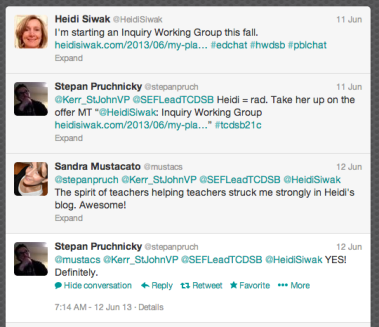Innovation is an overplayed word. It has been misused, overused and misunderstood. True innovation though is sexy, smart and seductive. I know that it should go without saying, but real innovation is also truly forward looking. It can be frustratingly incremental at times while at other times it seems to leap forward in the blink of an eye. The incremental piece gets overlooked and we forget that great products are often paradoxically “overnight sensations that were years in the making.” When a truly brilliant idea finally comes to fruition as a usable product, it is the result of some carefully placed and forward thinking early bets by the creators.
Steve Jobs and Bill Gates both approached an important fork in the tech road; Jobs moved down the path of the “post PC” movement while Gates took the PC path. In the words of Frost (kinda), “(Jobs) took the path less travelled by and that has made all the difference.” Jobs looked into the crystal ball and began to position Apple towards eventual explosive growth. Incremental choices were made that would ultimately converge into true disruption. Apple’s unveiling of the 5s and the 5c iPhones was an underwhelming event for some. I see it a bit differently. Two things really standout: the Fingerprint Security Ring and the 64Bit chip. The fingerprint security potentially could open up all kinds of integration. Think about the options for purchasing that come from the security of fingerprint level security. The 64bit chip also creates crazy speed and multi-tasking options for the phone. The shift towards mobile moves even faster now. The other key piece to consider is iOS7. It seems to me that the devices are being designed to showcase the operating system. The tech is the peripheral while the operating system takes on even greater importance. These seemingly incremental additions have to potential to eventually to lead to Apple’s next big thing.
Innovation is dependent on an overarching vision that is supported by smaller, integrated and forward thinking bets about the future. It is all about positioning hunches. The vision of the future might be a bit fuzzy but there is a gut feeling about the correct direction. At the outset of the creative process, rarely is the final product conceptualized or clearly pictured. Instead there is an understanding of needs, trends and possibilities for change. I have always been a proponent of the coaching adage, “practice makes permanent.” Just like the muscle memory that comes from repeated physical action, there is also institutional memory. This type of memory can be powerful or highly corrosive. In the right environment, the repeated practice creates powerful innovation and productivity. P&G, Apple, Google, Facebook, and numerous other companies are so successful because of the reflective positioning that creates the right institutional memory. Repeatedly bad positioning leads to the type of institutional memory that creates companies like ENRON! Each and every decision that an organization makes adds fuel to a feedback loop (picture the old cartoon image of the snowball rolling down a snowy hill).
In education, we are very much rooted in the now. Decisions are made based on test scores and other accumulated data. Analyzing this data is obviously important BUT it must be used wisely. Test scores are trailing indicators, good glimpses into “what was” that really need to be rethought before trying to use them to project what might be. We need to start being bolder with our interpretations of the data. We need to use that data to start making important small bets now with an eye towards reaching a grander vision. Just like Steve Jobs aligned Apple with an eye towards the post-PC world, we need to start aligning all decisions towards a post-SCHOOL version of education. Instead of perpetuating and propping up the status quo of bureaucratic education, we have to start positioning our system to handle an “anytime and anyplace” version of education. Decentralization of education is underway and no one has a perfect vision of what the final product will look like. Our goal is to start making the decisions now that allow the learning to bloom. If we don’t, we risk irrelevance and obsolescence.
We have to take a glimpse into the crystal ball and try to make sense of the blurry future staring back at us. Let’s start the positioning of those small bets and hunches in order to create something powerful and self-perpetuating.


